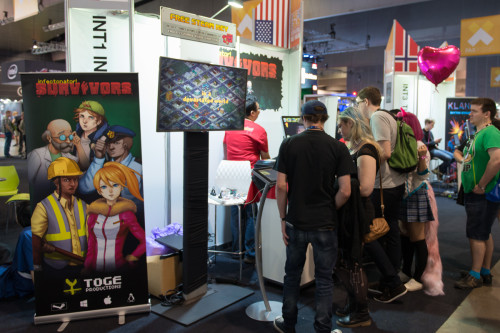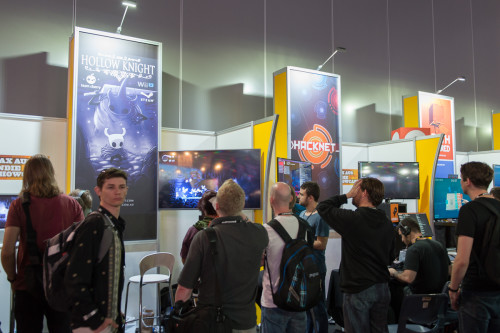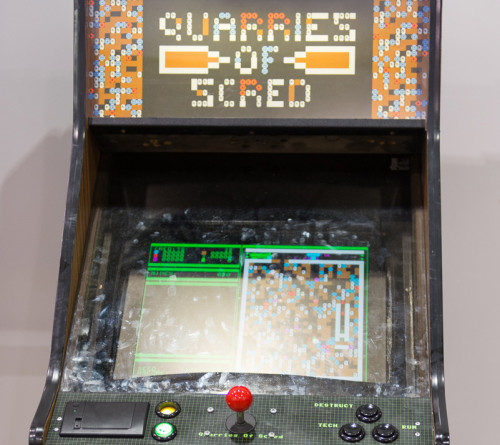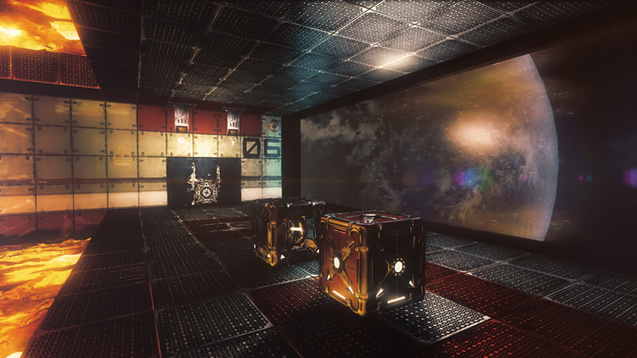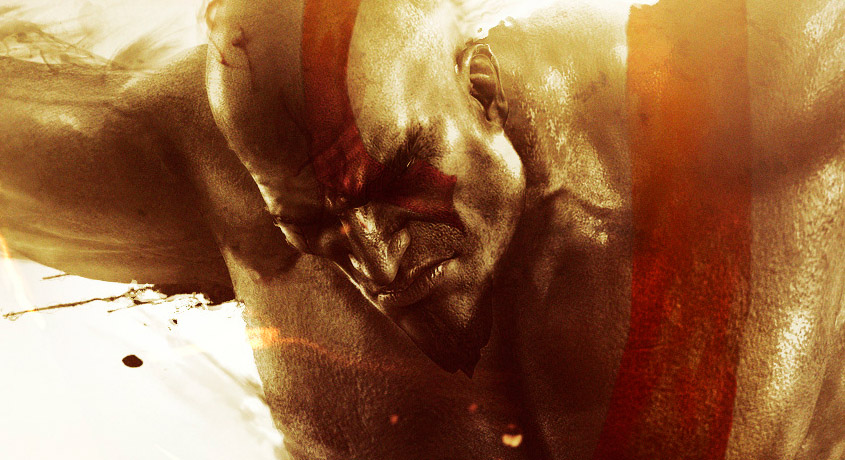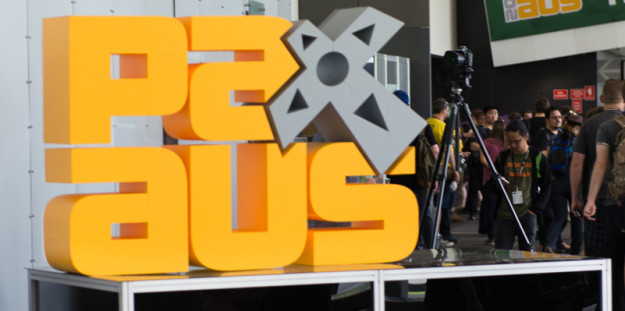
The indie area at PAX AUS 2015 was back, bigger than ever this year, with a huge number of games on show. Over the course of the weekend, I spoke to as many developers as possible, and got to play quite a few of the games there. The booth was so large that, even with three full days, there wasn’t time to see it all, but here’s what I did get to.
Objects In Space
Describing itself as a “Modempunk stealth space trading game”, Objects In Space attracted a crowd due to its striking controller setup that replicated analogue controls for an old, well-worn space ship.
It’s fair to say that space-trading games are in vogue at the moment, so any game that goes down this road needs to be unique, and Objects In Space certainly is that. It has a sense of a world that’s just barely holding together, where it’s enough of an achievement to survive, let alone succeed.
While the game’s cool controller isn’t necessary to play it, and it won’t be available for players to purchase, the developers do like the idea of making the designs available for players to download and 3D print themselves, or constructing their own designs to play the game.
Staxel
Oh look, a voxel-based adventure game with a crafting focus! But wait, before you go running back to the familiar comfort of Minecraft, hear me out! Staxel is more than just another Minecraft clone.
For a start, the game is focused more on adventuring than survival, and there’s a much stronger focus on community and working together with other players. One example of this is the crafting system. Once a player starts crafting items, another player can come and help or finish the crafting for them.
Visually, Staxel has a much cleaner look than Minecraft, and reminds me a little of the long-in-development Cube World. If the game can deliver on the promise its shown at PAX AUS, then it may be a compelling alternative to both those games.
Skedaddle
One of a number of student projects on display at PAX, Skedaddle is a platformer about helping a selection of circus animals escape. Each animal can only perform certain actions, and it’s necessary to switch between different animals in order to pass most levels.
While the version of Skedaddle on display at PAX was a short demo, the concept is pretty sound and the game has a lot of promise if it goes further.
Inflatality
Without a doubt, Inflatality was the biggest hit of PAX AUS. The simple concept is a fighting game based around wavers— those air-blown figures often seen out the front of car dealerships and other such places— and the result is brilliant, inspired fun.
The game uses dual analogue controls, although control in Inflatality is a fleeting, rarely glimpsed concept. You mostly do your best to inflict damage on your opponent, either by hand or with the hammer that can be activated after building up the game’s equivalent of a super meter.
It’s hard to really communicate just how fun this game is in a few short paragraphs. At PAX AUS, there was always a crowd around it, and developer Hojo Studios ran small double-elimination tournaments throughout the day. There’s definitely a huge amount of potential in Inflatality and I have no doubt we’ll see it as a finished game at some point.
Assault Android Cactus
We’re big fans of Assault Android Cactus here at Rocket Chainsaw Towers, having given it a glowing review when it launched a couple of months ago. If you want to know why you should check out this fantastic Australian-made twin-stick shooter, then go check it out.
The guys at Witch Beam were on hand at PAX AUS to show off the upcoming PS4 version of the game. It looks and feels exactly like the PC version, but adds some nice concept art galleries and a few other tweaks to make the game more amenable to consoles.
I also got to finally have a go at the 4-player local multiplayer, and it was as fun and chaotic as expected, with the game scaling nicely to four players. I really want to see Assault Android Cactus succeed as it’s a wonderful game with a lot of heart and character and manages to do somethinf fresh and fun with a well-worn genre.
Stellar Strive
I can’t think of too many games that have come out of Indonesia, but Jakarta-based Gotta Games were at PAX AUS with their latest title, Stellar Strive.
It’s a side-scrolling platform action game with some very nice 2D art. The obvious comparison is with Dust: An Elysian Tale, but Stellar Strive is doing enough of its own thing to stand apart from that indie darling. The controls are slick and the combat feels really, really good.
If you’re looking for a new side-scrolling action game to scratch the itch left behind by Dust or maybe Capcom’s recent Strider reboot, then Stellar Strive is a game to look out for.
Sometimes Always Monsters
Vagabond Dog’s Always Sometimes Monsters was a dark journey through the human psyche, experiencing the all-to-real struggles of everyday life.
The follow-up, Sometimes Always Monsters is another exploration of this type, but this time, rather than struggling to get by, you’re a successful author crossing the USA to search for inspiration as you struggle to follow-up your successful first novel.
I got the impression that the game has something of an autobiographical element for its developers, just as the first game did, to an extent. Nevertheless, it’s great to see that not only were people willing to try a game dealing with such heavy themes, but that there’s enough interest to justify a sequel.
Neon Rain
One of the most interesting things at PAX AUS this year was just how many indie devs were embracing the Oculus Rift and other VR headsets. Neon Rain is a cyberpunk adventure game that’s designed around using the Rift hardware.
The game looks very much like what you might imagine a modern game based on Neuromancer might look, and it plays more like an adventure game than an action game. The developers even describe it as a “detect-em-up”.
Even if you don’t intend to get a VR headset, you’ll be pleased to know that Neon Rain will work just fine without one. Either way, it’s a promising title that shows just how big the potential for the technology is.
Mystery
It seems like everything has to be procedurally generated or “roguelike” these days, and most of the time there’s little variation in what kind of game that means. Mystery, by one-man studio Ironworks Games, aims to do something different with the idea, however.
Essentially a procedurally generated murder mystery, Mystery looks and feels somewhat like a modernised version of the classic boardgame Cluedo. Each run of the game involves solving a different murder, and the goal is to offer enough variety to keep murder-mystery loving players coming back for more.
So if you grew up on classic British crime stories, everything from Agatha Christie to Inspector Morse, then Mystery definitely looks like a game you should check out.
Quarries of Scred 2
Speaking of procedurally generated games, last year’s retro-inspired quarrying classic has returned for a sequel in Quarries of Scred 2.
The game is essentially a multiplayer remix of the original, and offers up a whole bunch of different modes to cover its four-player mining shenanigans. While the game is local multiplayer only, that didn’t seem to stop people from having a good time with it at PAX AUS.
If you liked the first Quarries of Scred, or you’re a fan of classics such as Dig Dug and Boulderdash, then Quarries of Scred 2 will be right up your alley.
Marble Mountain
I’ve always felt that there was some kind of small niche for a 3D remake of the arcade classic Marble Madness. Sure, there have been games like Super Monkey Ball that have tried to fill a similar niche, but nothing has really captured that Marble Madness feeling.
Until now. Marble Mountain, from Lightning Rock, is very much aiming to recapture the magic of Atari’s hit. It’s got some pretty spectacular levels for you to pass through as you move your marble around, and being truly 3D offers a whole range of tricks and options that weren’t available in the 1980s.
Perhaps the most intriguing thing about Marble Mountain however, is its VR support. Rather than giving you a marble’s-eye-view of the world, the game lets you view the world through the VR headset, and you can move your head around to change your view of the level that you’re moving the marble through. If you’re concerned that VR headsets are going to be solely about immersive first-person experiences, then this game is worth checking out.
Additional photography by James Varoutsos

